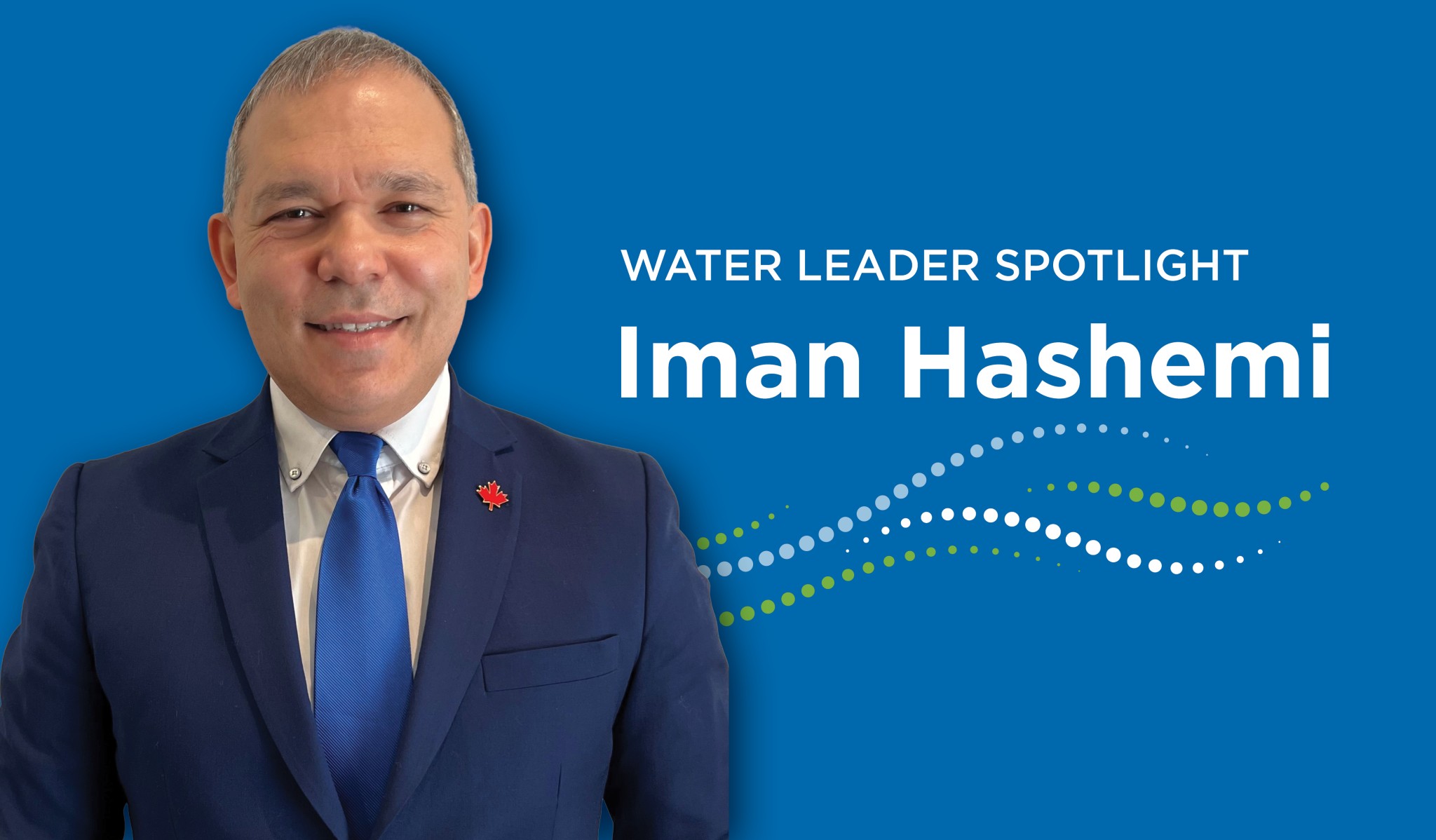Water leader spotlight – Gen Nielsen
September 11, 2024
CWN’s quarterly newsletter with the latest news, insights and thought leadership.

In Canada, we are privileged to have municipal water leaders from diverse backgrounds serving communities across the country. At Canadian Water Network (CWN), we are highlighting these exceptional individuals. Our aim is to celebrate and elevate their contributions by creating profiles that showcase their career paths and insights on industry trends. For our second water leader spotlight, meet Gen Nielsen, director of water facilities and treatment services at the City of Ottawa. Continue reading to discover her journey into the water industry and her perspectives on emerging trends.
Can you describe what led you to choose a career in municipal water? What has your career path looked like since you joined the industry? What do you enjoy most about your work?
I fell into a career in the water industry. In high school, I excelled in math and science, which led me to pursue engineering. Among the various branches, civil engineering stood out as the most interesting to me. My first job as a co-op experience involved hydrologic modeling, and I built on that experience over time. Each subsequent job has been a bit different from the last, but each has built upon the skills and knowledge I’ve gained along the way. Now, I find myself working in municipal water and wastewater facility operations.
What are the most important skills for a successful career in municipal water management?
The most important skills for a successful career in municipal water management include:
Curiosity and willingness to learn: Usually, when you’re in a municipal environment, you have one small piece of a much bigger pie. You need to understand what all those pieces are and how they work together. The City of Ottawa is home to a million people, and the municipality itself is made up of more than 17,000 employees. This isn’t a job you’re going to do alone, so you need to figure out how to work together with others to get things done. Part of that is understanding where they’re coming from and understanding what challenges and constraints they have.
Regulatory and safety knowledge: In the water industry, understanding regulatory and safety requirements is paramount. As a manager and leader, setting a tone for strong compliance, health and safety, and quality culture is critical. I think the public implicitly expects us to be doing a good job with respect to environmental protection, water safety, and employee health and safety.
Infrastructure management: Water and wastewater systems rely on infrastructure, but it’s people who manage and operate it. Understanding their needs, providing the necessary tools, and supporting them in their roles is crucial, especially in leadership positions.
Organizational awareness: Being aware of what’s happening within the city, both bureaucratically and politically, is important. This awareness helps you effectively promote the priorities of your team. For example, understanding the financial challenges related to Ottawa’s new transit system can impact the overall city budget, including water and wastewater services.
Looking back at your career in the water industry, what is one positive change you have observed and/or experienced?
One of the most fascinating changes I’ve observed in my career in the water industry is the growing awareness of the social aspects of infrastructure and engineering. When I studied engineering, the focus was primarily on the technical side—calculus, chemistry, physics and a basic engineering ethics course. There was little discussion about how infrastructure impacts people’s lives, the community, or the equity implications of engineering decisions.
Over time, I’ve seen a shift towards recognizing the significant role infrastructure plays in communities. Engineers’ choices can have profound impacts, and there’s now more emphasis on understanding these effects. For example, I’ve been reading about transportation infrastructure and how highways have historically cut through and damaged communities, particularly in the United States. These highways often went through racialized or low-income neighbourhoods, which lacked the power to oppose such projects, leading to the destruction of community cohesion in favour of wealthier individuals who could afford to drive.
Interestingly, there are now federal programs in the U.S. aimed at reconnecting these divided communities, which is a positive step. This awareness extends beyond transportation to areas like stormwater management and rate structures in water and wastewater services. It’s encouraging to see this aspect gaining more attention and space.
As engineers, our work isn’t just about building infrastructure; it’s about supporting and enhancing communities. Considering the intersectionality of people and infrastructure adds a layer of richness and complexity to our work, making it even more rewarding.
What are three emerging trends in the water sector you think water managers should look out for?
One of the most pressing issues is contaminants of emerging concern, which have significant human and environmental impacts. On the facility side, changing water and wastewater processes to address these contaminants can have substantial financial implications. This challenge is paired with regulatory requirements that will likely come down the pipe. It’s also crucial to monitor how these contaminants are controlled. For example, the strategy could involve either source control or end-of-pipe treatment. Federal regulations might prevent these contaminants from entering the water cycle altogether, or they might allow them to enter, requiring us to remove them later. Understanding and anticipating the strategies for managing these contaminants is essential.
Another piece is infrastructure management, particularly balancing growth needs. There’s a significant demand for housing across the country, and housing development is impossible without adequate water and wastewater services. This involves not just the pipes but also the treatment plants. Timing expansions correctly is crucial—you don’t want to build too early and have underutilized capacity, nor can you afford to build too late and face capacity shortages. Additionally, balancing these growth needs with the renewal of aging infrastructure is essential. All of this must be managed within the constraints of operational and financial limitations. This balancing act is a fascinating and vital challenge in the water sector, one that requires careful attention and influence.
The other big piece on my mind is human resource sustainability. We are at a turning point where many long-time industry professionals are retiring, and with them, valuable knowledge sometimes leaves as well. This issue spans all levels of the organization, from engineers and tradespeople to senior leadership and managers. Ensuring we have enough strong, capable and experienced individuals in every part of the organization is crucial for maintaining infrastructure operations.
Infrastructure itself is just one part of the equation; it takes skilled people to manage and operate it effectively. Therefore, having a sufficient number of qualified personnel is critical. Additionally, there is a growing awareness of work-life balance. We see more sharing of parental duties across genders, meaning that everyone in the workplace likely has family commitments, whether it’s children, parents, a spouse or personal health concerns.
Caring for the whole person is essential, ensuring that our work environment supports everyone’s well-being. This includes being reasonable with our expectations and not overworking employees. By fostering a supportive and healthy work environment, we can retain a strong and dedicated workforce.












